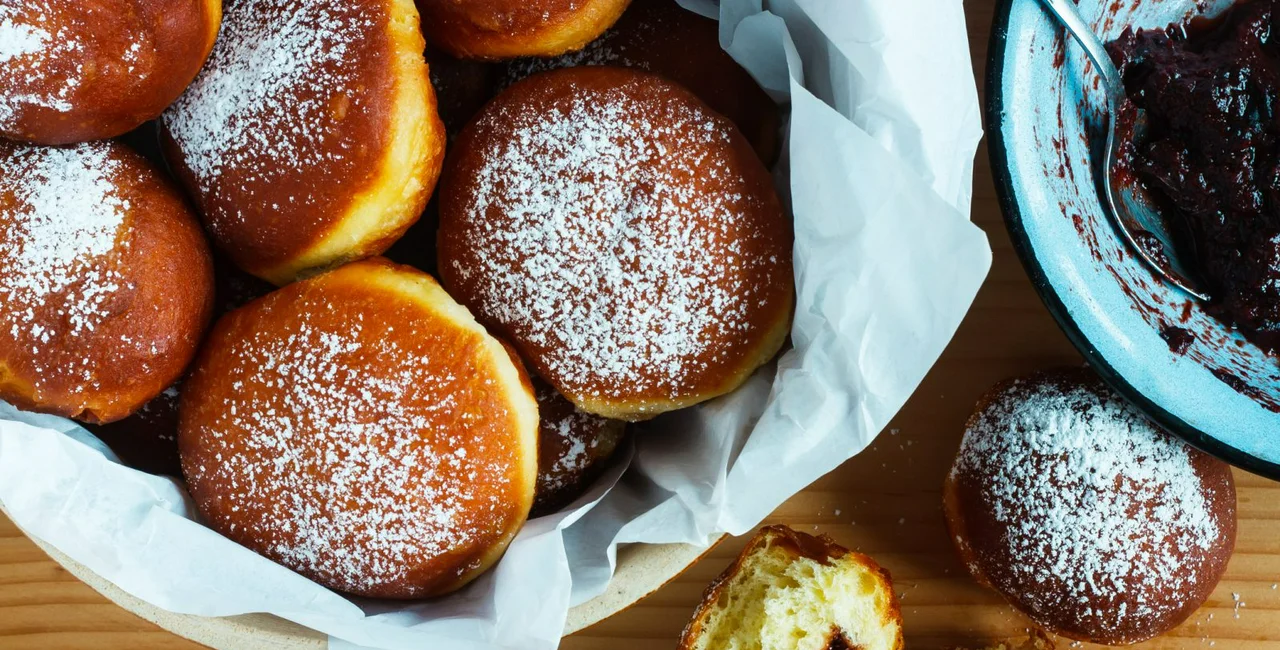This article was originally published in 2017.
This Thursday, February 20 marks Fat Thursday (Tučný čtvrtek), the six days before Ash Wednesday and the traditional beginning of carnival, or masopust, festivities in many European countries, including the Czech Republic.
Epiphany begins on January 7 and ends on Shrove Tuesday (or Fat Tuesday) which is the day before Ash Wednesday and begins the 40 days of Lent.
The traditional masopust confections featured here are an important element of Shrovetide celebrations and can be made not only carnival season but whenever a craving for the deep-fried and sugar-dusted hits!
Vdolky
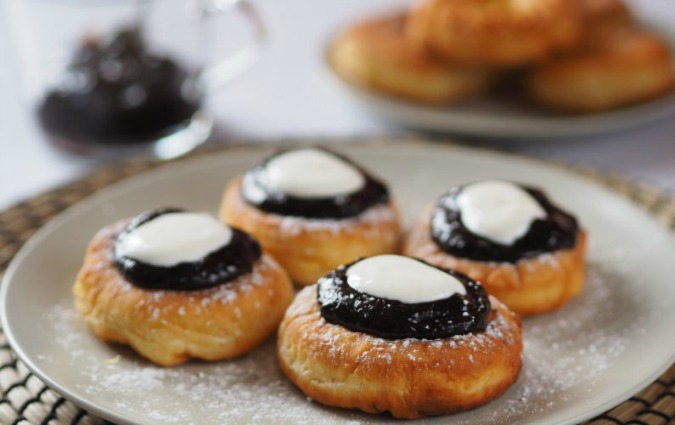
Photo: Vdolky / Bezlepka.cz
This yeast-based confection is similar to the French beignet although a bit more substantial by our estimation. The Czech vdolky are typically topped with a spoonful of luscious plum jam (povidla) as well as a dollop of whipped cream—in fact, before frying them you are advised to dip a finger into the batter to make a groove for holding all that sugary goodness. Full recipe in English.
Koblihy
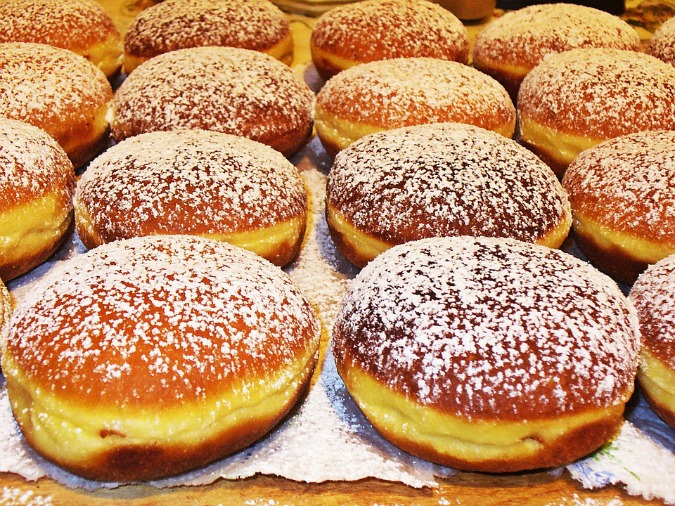
Photo: Kobliha / Pixabay
Masopust wouldn’t be masopust without a batch of Czech carnival donuts. Whether you buy them (if you’re in Prague on February 22 try this tantalizing Nusle pop-up for kobliha) or whip up a batch in your own kitchen, no pre-Lenten feast is complete without the custard- or jelly-filled and sugar-sprinkled delights elsewhere known paczki. Full recipe in English.
Boží milosti (God’s mercy)

Boží milosti / Screen grab: YouTube
Perhaps a bit of a lesser-known on the spectrum of carnival indulgences, boží milosti (God’s mercy) are crispy fritters made from a butter-based dough and, you guessed it, deep-fried and dusted with confectioner’s sugar. A distant relative to the Italian chiacchiere which takes its name from the Italian word for “chatter” due to its vociferous crunch. Full recipe in English.
Kynuté koláče s náplní (Sourdough kolaches with fillings)
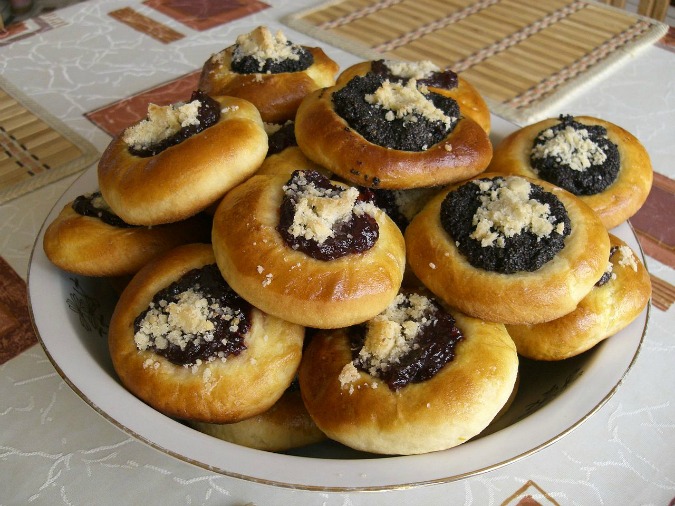
Photo: Kolač / Wikimedia Commons
Despite its humble origins, Czech kolač, a pastry typically filled with preserves or farmer’s cheese, has become a worldwide phenomenon with particularly loyal devotees to be found in Texas where spicy sausage versions rule the day. But at masopust it’s all about the sweet version, filled with plum jam and/or poppy seeds. Full recipe in English.
Buchty (Yeast buns)
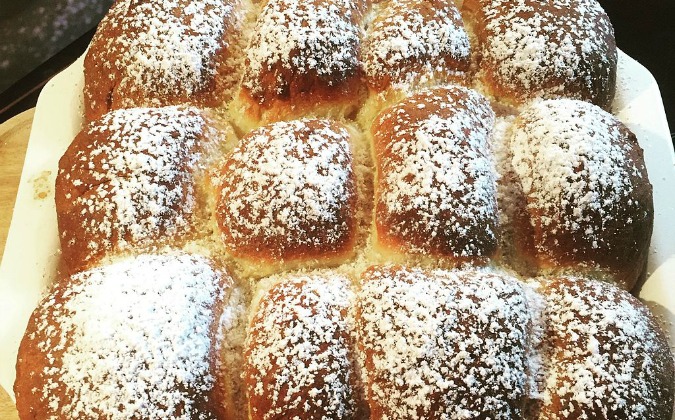
Photo: Buchty / Wikimedia Commons
Something like a dinner roll filled with plum preserves or the Czech tvaroh cheese, these yeast buns are almost as essential to the Shrovetide revelry as kobliha. If you want to be even more decadent about it, traditionalists glaze their buchty with a mixture of melted butter and rum. Full recipe in English.












 Reading time: 2 minutes
Reading time: 2 minutes 